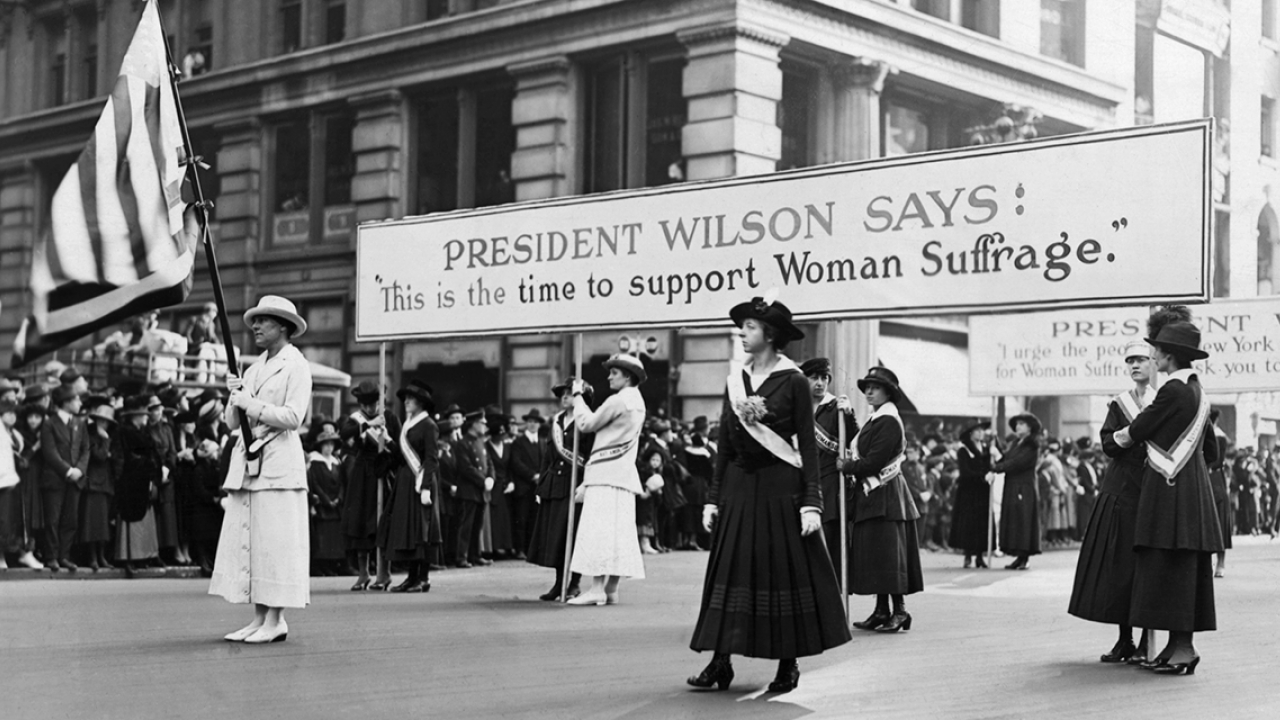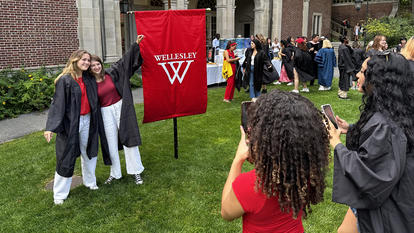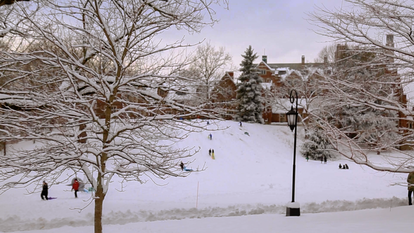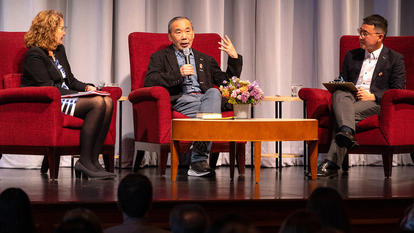Women’s Equality Day Is August 26, Commemorating Women’s Right to Vote

The 19th Amendment to the U.S. Constitution, giving women the right to vote, was ratified on August 18, 1920, and went into effect eight days later. August 26 is now officially Women’s Equality Day, passed by resolution in 1971.
The amendment was the result of generations of organizing and activism by women’s suffrage campaigners, starting in 1848 with the first women’s rights convention in Seneca Falls, N.Y. Early leaders of the movement included Susan B. Anthony, Elizabeth Cady Stanton, Lucretia Mott, and Frederick Douglass. (Wellesley women also marched in the suffrage parades of the 1910s.)
The hard-won campaign for women’s suffrage had implications that resonate today. “Women fought for the vote because it is the ultimate sign of citizenship in a democracy and is a way of saying those who vote are equal in the public arena,” said Susan M. Reverby, Marion Butler McLean Professor Emerita in the History of Ideas and professor emerita of women’s and gender studies at Wellesley. “That is why a seemingly simple reform, suffrage, has such radical implications. Leadership in the public domain depends on women being accepted as full citizens with rights.”
While the 19th Amendment applied to all women in the United States, tens of thousands of African American women were still denied the right to vote until passage of the Voting Rights Act of 1965.
“African American women played a strong role in the suffrage movement, but Jim Crow-era restrictions like literacy tests and poll taxes throughout the South deprived them of voting rights,” said Reverby. “Thousands of African American women participated and provided grassroots leadership in the civil rights movement, which, in a way, was about voting rights as well as other forms of legal segregation.”
The struggle for voting rights continues today. Amy Hoffman, editor in chief of Women’s Review of Books, published by the Wellesley Centers for Women, points to examples such as President Trump’s creation of a Presidential Advisory Commission on Election Integrity, after alleging that between 3 million and 5 million undocumented immigrants voted illegally in the 2016 election, depriving him of the majority of the popular vote. Critics protest that these efforts are being drafted by states controlled by Republican legislators and governors and are aimed particularly at minority voters, who tend to vote Democratic.
“The clock is being wound backward. Women are significant parts of the populations being targeted for voter restrictions,” Hoffman noted. “It’s ironic that disenfranchised groups like women and African Americans, who struggled long and hard to get voting rights, are seeing these rights threatened with restrictions, voter identification laws, and gerrymandering.”
Blanket restrictions can deny voting rights for all citizens, but they disproportionately affect women voters in minority communities because women vote more than men, Reverby explained. “In recent elections, voter turnout rates for women have equaled or exceeded voter turnout rates for men,” she said, citing research by the Center for American Women and Politics.
“Voting rights are about, and denial of rights is about, racism, gender, and political power,” said Reverby. “This is why thoughts about voting or other issues require feminists to think in what we call intersectional terms: that is, to understand that gender issues are always also linked to class, race, ethnicity, sexuality, gender status, disability, etc.”



